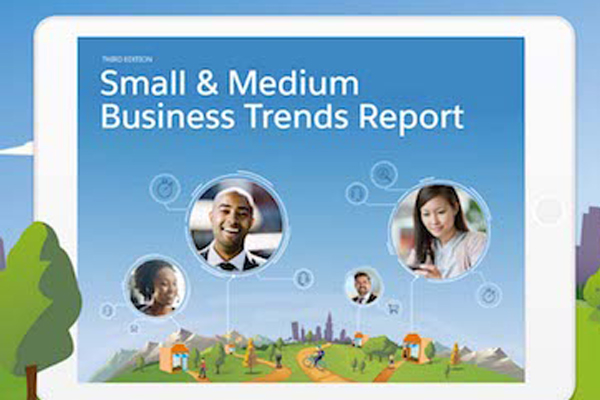Small and medium-sized businesses (SMBs) face unique challenges to attract new customers, grow revenue and maintain profitability, especially as their businesses grow. What are the biggest obstacles for small business leaders and what are their priorities? Which technology solutions are they opting for to help them generate growth?
Salesforce Research just released the third edition of the Small & Medium Business Trends Report, which unveils key insights and observations from over 2,000 owners of small and medium businesses from all over the world. The report investigates the motivations and challenges for small-business owners in reaching customers and business goals, and looks into how several factors shape their entrepreneurial experience.
We've highlighted some of these insights but do read the full Small & Medium Business Trends Report to find out more.
Demographics Shape Entrepreneurial Experiences
Every SMB leader has their own motivation to start a business, but some motivations are more universal than others. The most common reason for SMB leaders to start a business is the desire to be their own boss (55%), but over one-third also sought a more flexible schedule, wanted to make more money, or took advantage of an opportunity that presented itself.
These reasons tend to align with age. Compared to traditionalists and baby boomers, Gen Zers and millennials are more likely to start a business to pursue a passion, to earn extra money, or to leave a hostile work environment.
The challenges in starting a business also differ between men and women. Though both genders struggle with hiring the right talent, accessing capital, and time management, women find that accessing capital is the biggest constraint, whereas men cite it as their second-highest constraint.

Advanced Technology comes to SMBs
Technology is rapidly changing — not just for enterprise organisations, but also for SMBs. Technologies like AI, which commonly have been seen as more apt for large global companies, appear to be moving downstream to SMBs, becoming a strategic priority in growth plans.
According to our research, while only 8% of SMBs are using AI today, an additional 32% have plans to implement the technology, representing a potential growth rate of 310%!
Amongst those already using AI, the top use cases feature lead prioritisation, predictive audience for marketing and automated service chatbots.

Customer Expectations Dictate Investment Plans
Modern customers have increasingly high expectations for businesses, with 76% of customers expecting companies to understand their needs and expectations and 70% expecting connected experiences. Data shows that keeping up with the rapid change in customer expectations is the biggest challenge for SMBs, and 53% of SMB leaders feel at a competitive disadvantage to meet these demands.
Consequently, when planning business investments, SMBs prioritise technologies that help them offer the personalised experiences that customers want. Customer relationship management (CRM) is the top budget priority in technology, along with Financial Software and Hardware.

Trust Matters Above All Else
In the current business landscape, where data privacy policies proliferate and security breaches are an increased concern, trust is no longer an imperative for business leaders, but has become a key competitive differentiator. The failure to handle customer data conscientiously and effectively can significantly impact customer trust and loyalty.
Customers want trust, and this sentiment rings true with SMBs who overwhelmingly view trust as the most critical element in their relationship with customers, employees, and vendors.

That’s just the beginning of it...
Download your copy of the Small & Medium Business Trends Report to learn more about the new technology trends affecting the SMB business world, the challenges other business leaders face and which factors can help you set your small business up for growth.








